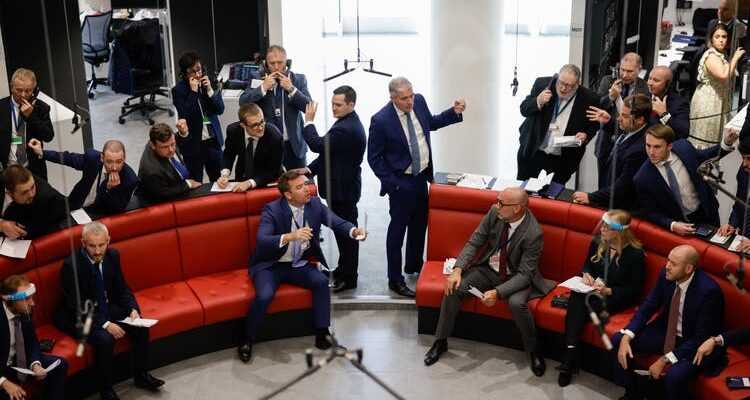After a historic explosion in nickel prices, the London Metal Exchange plunges into crisis. Some investors are obviously worth more than others to the oldest trading place for industrial metals.
Problems with the IT systems make trading in the LME «Ring» even more hectic.
The London Metal Exchange (LME), the world’s largest and oldest trading center for nickel and other industrial metals, has fallen into crisis as a result of the Ukraine war. Russia’s aggression is also causing unprecedented price capers on the metal markets, and not just in trading in oil, natural gas and electricity. But in dealing with it, the LME jeopardizes the reputation it has acquired in its 145 years of existence. The credibility of the stock market is suffering rapidly, according to trading circles. Trading was also severely disrupted on Thursday, more than a week after the beginning of the chaos.
A Chinese has gambled away
Nickel plays an essential role in the global economy. It is not only a key raw material for the production of stainless steel, but also of batteries for electric vehicles, among other things. That’s why the uproar was great when the price more than doubled in a short space of time last week and reached a record high of over $100,000 a ton. As a result, the LME not only suspended trading in nickel for a whole week, but also canceled transactions that had been made during the price jump.
A major role in the mess was played by Chinese tycoon Xiang Guangda, himself a steel producer who had bet heavily on falling nickel prices prior to the start of the Ukraine war. When the crisis also boosted the nickel price, a short squeeze developed that drove the note higher even faster: In order to limit his losses, Xiang was forced to buy large amounts of nickel contracts. Other investors who had bet on falling prices with short sales were also caught on the wrong foot and had to buy.
The disruption to trade caused less outrage than the cancellation of around 5,000 transactions worth almost $4 billion. The argument goes that the LME is protecting investors who have speculated badly – and punishing those who could have dealt with the turbulence well. The stock exchange has given up its neutrality and has severely damaged confidence in secure trading, it said. Adding to the controversy is that the LME is owned by the Hong Kong Stock Exchange. One allegation is that Xiang and his Tsingshan group could have influenced the decision.
IT problems exacerbate the crisis
After a week’s break, trading opened on Wednesday, but promptly had to be suspended again. The LME only wanted to accept trades within a price corridor in order to limit fluctuations. But some traders managed to circumvent the lock in the electronic trading system. After the system was deactivated, buying and selling shifted to the phones and the famous “ring,” a circle of traders at the heart of the exchange who call out prices to close deals.
The LME had tried last year to abolish the “Ring”. This should make pricing more efficient and allow more market participants – but failed due to resistance from traders. Even then, they argued that the IT system could not cope with the complicated trade. There were also problems with the electronic system at the start of trading on Thursday morning. It was restarted and again previously made deals were cancelled.
You can visit Benjamin Triebe, Business Correspondent for the UK and Ireland Twitter follow.
